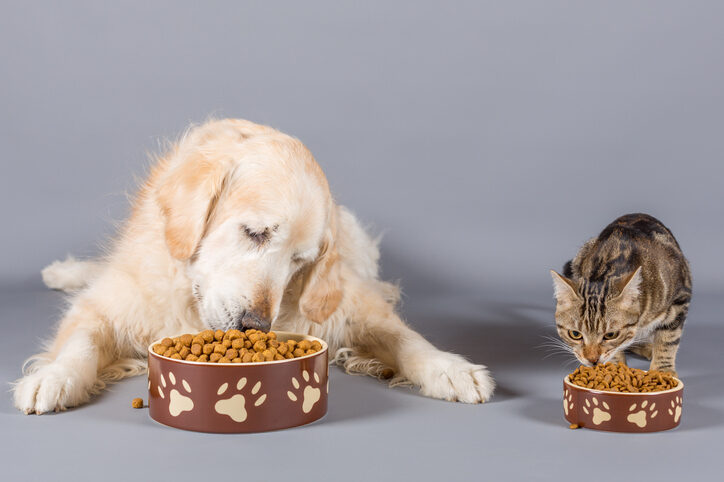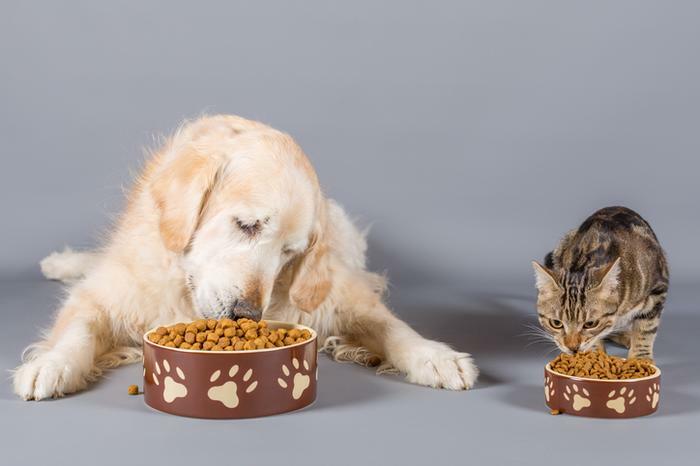- September 9, 2022
- No Comment
- 9 minutes read
Pet food sales and costs are off the leash – ConsumerAffairs


You might not be able to teach an old dog new tricks, but you can sure spend a lot on buying Rover and Kitty some food. According to Statista, pet food sales are off the leash with U.S. pet owners expected to spend around $54 billion on pet food this year – more than double what was spent five years ago.
And that revenue stream may rival the Mississippi River if things don’t ease up. Sean Turner, the Chief Technology Officer and Co-founder of Swiftly, told ConsumerAffairs that according to data he’s viewed, pet food prices have increased by 11% since July. Grrrr…
If you’re a pet owner, chances are you’re not too happy about this, either. But what can you do?
While the internet is ripe with tips on how to save money on pet food, the one question ConsumerAffairs found missing is how can pet owners make budget-conscious decisions in the face of inflation without feeding their pet food that might be unhealthy or putting their pet at risk?
To find the answers, we asked experts to weigh in on the subject. They had plenty of advice, starting with cutting corners on pet food to save money:
Should pet owners rethink portion size to save money?
Dog owners already get poor marks for not following guidelines on pet food handling, but they may have gotten even sloppier trying to fend off the cost of inflation by doing things like cutting back on portion sizes.
Thomas Dock, a veterinary nutritional advocate and certified pet nutrition coach with Noah’s Animal Hospitals, says that rather than try to figure portion sizes out on your own, you should ask your vet about your pet’s daily energy requirements.
“Then, once that is known, you can choose the food you want to feed and simply divide the daily energy requirement of the pet by the number of calories in a cup of the preferred food to determine the approximate number of cups to feed,” Dock said. “The pet owner should then monitor the pet’s weight and overall body condition and adjust the amount fed to keep the pet at a lean body weight.”
Dr. Angie Krause, DVM, CVA, CCRT told us there is another concern when it comes to portion sizes.
“Overfeeding places your pet’s health in danger. Obesity causes other diseases and inflammation in the body,” Krause said.
She added that it’s important to work with your veterinarian and to understand your pet’s ideal weight. Just like humans, she says caloric needs vary greatly between individual bodies.
How about mixing different types of pet food together – that might be a cost-saving measure, right?
If you think you can mix bargain pet food with budget pet food to save a few bucks, one vet thinks it’s doable, but you must be careful.
“Mixing pet food brands together is safe for pets as long as the pet does not have allergies to any of the ingredients and the foods are appropriate for the life stage of the pet,” Petfolk vet Dr. Jennifer Sawyer. told ConsumerAffairs.
“More importantly, it is advised to choose pet food brands that are approved by WSAVA (World Small Animal Veterinary Association). If a pet is on a therapeutic or prescription diet, mixing in other brands without approval from a veterinarian is not advised as this can cause the underlying disease being controlled with the food to become unmanaged,” she said.
How about giving the pet some “human” food?
To purists, feeding Fido some leftover apple pie is beyond the pale, but Sawyer says that if you do it the right way, it’s acceptable.
“Feeding a pet human food as a filler to save money on pet food can be done safely as long as enough pet food is being fed to maintain the appropriate minerals and vitamins that a pet needs to stay healthy,” she said.
Dock agreed, adding a word of caution: “There are many human foods that can be problematic for pets, so always consult with a veterinarian before simply adding what’s on your plate to your pet’s bowl,” he said.
Is organic pet food worth the added cost?
Just like everything else “organic,” organic pet food is more expensive than non-organic foods. Sawyer says that if you’re going the organic route, you might want to rethink that a bit.
“There is no study data showing that organic foods provide more benefit to a pet’s longevity or overall health when compared to non-organic pet foods,” she said.
Is buying online a cheaper option than going to a store?
It depends. Turner said that while e-commerce’s role in the pet food sales chain continues to grow, buying online often means higher costs to cover shipping or delivery.
However, Turner believes that loyalty programs tied to a pet food retailer’s mobile app could lead to some savings as they incentivize consumers with highly personalized offers that deliver exclusive deals, discounts, and rewards that are redeemable as they shop.
Will going the refillable/subscription route save any money?
From what ConsumerAffairs sees, it may be the perfect time to go the subscription route for pet food. There are several companies that have jumped on the people food subscription bandwagon, trying to satisfy all the wagging tails that people took in during the pandemic.
The most well-known among those is a company ConsumerAffairs reviewers give good marks for having better prices than stores – Chewy. The company claims its “autoship” feature can save consumers up to 35% on eligible items.
Another company – Canidae – is giving pet owners a chance to save in another way: refillable pet food stations. It’s only available at Petco for the time being, but the company claims it offers sizable savings when buying its kibble in bulk, as well as saving tens of thousands of non-recyclable pet food bags from landfills.
For example, four pounds of Canidae Pure kibble from the refill station would save a consumer more than $9 per bag as opposed to a regular, pre-packaged 4-pound bag.
Quick and easy. Get matched with a Pet Insurance partner.
Gary Guthrie covers technology and travel for the ConsumerAffairs news team. Prior to ConsumerAffairs, he was a programming consultant for radio and TV stations in some 20 markets around the U.S., as well as a presentation developer for the likes of Jack Daniel's, Procter & Gamble, AT&T, and Columbia University.
Get the news you need delivered right to you.
Thank you, you have successfully subscribed to our newsletter! Enjoy reading our tips and recommendations.
Sign up to receive our free weekly newsletter. We value your privacy. Unsubscribe easily.
We’ll start sending you the news you need delivered straight to you. We value your privacy. Unsubscribe easily.
ConsumerAffairs is not a government agency. Companies displayed may pay us to be Authorized or when you click a link, call a number or fill a form on our site. Our content is intended to be used for general information purposes only. It is very important to do your own analysis before making any investment based on your own personal circumstances and consult with your own investment, financial, tax and legal advisers.
Company NMLS Identifier #2110672
Copyright © 2022 Consumers Unified LLC. All Rights Reserved. The contents of this site may not be republished, reprinted, rewritten or recirculated without written permission.

